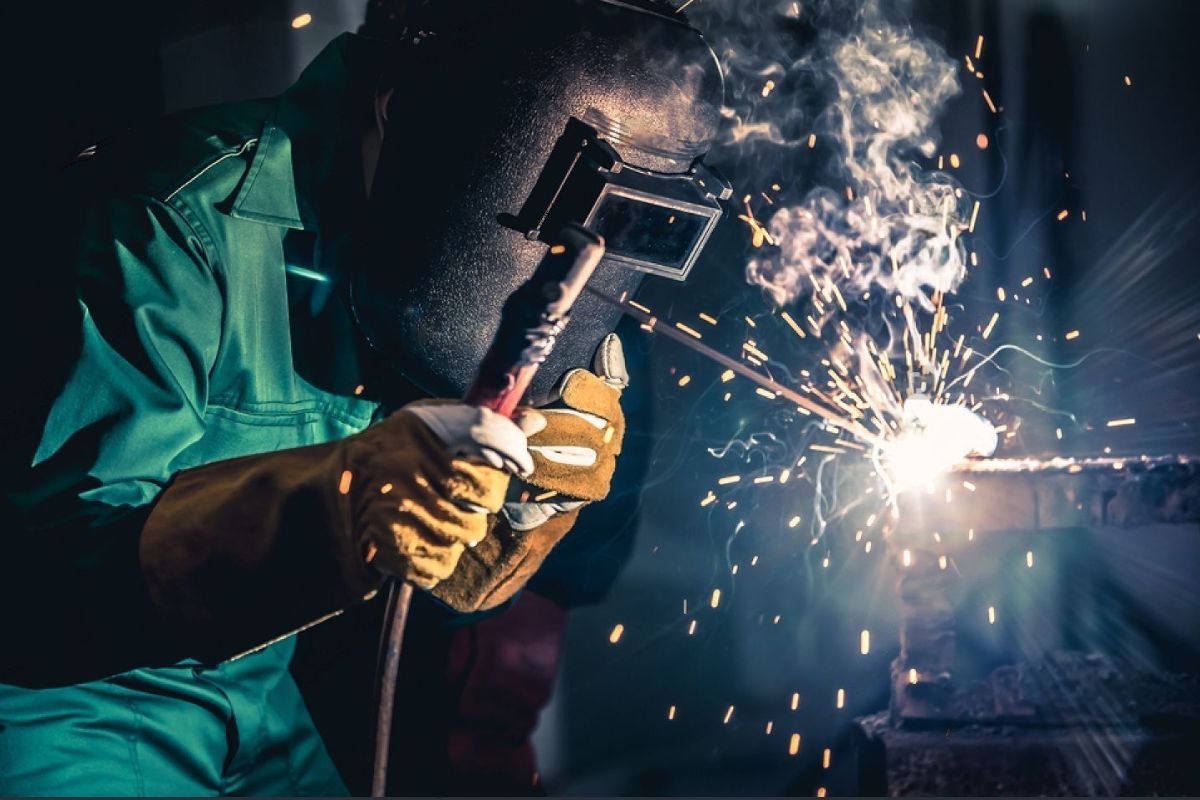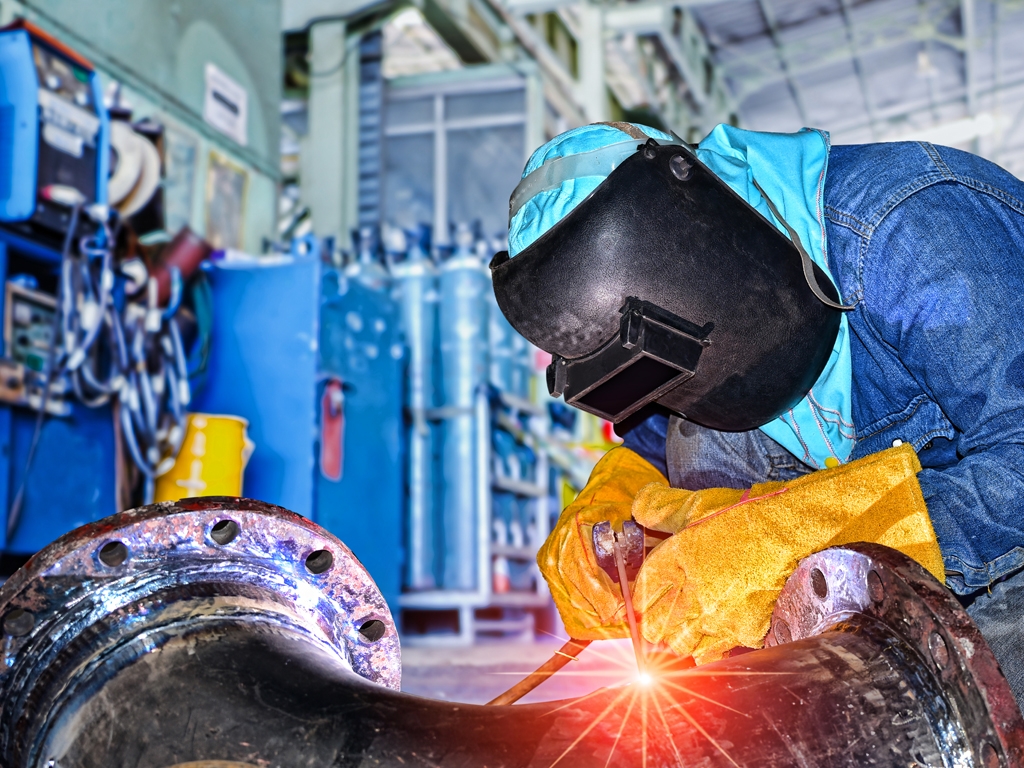Best ways to deal with warping in Montana Mobile Welding and Repair Belgrade
Wiki Article
Common Welding Repair Work Issues and How to Address Them Successfully
Welding repair work typically encounter an array of concerns that can threaten the honesty of the final product. Usual troubles consist of insufficient infiltration, porosity, and imbalance, among others. Each problem offers special difficulties that require specific techniques for resolution. Understanding these concerns is vital for welders aiming to enhance their abilities and results. This discussion will certainly check out these usual welding repair service problems and effective approaches to address them.Poor Penetration
Inadequate penetration happens when the weld metal fails to totally fuse with the base product, causing weak joints and possible structural failings. This problem frequently stems from inadequate heat input, inaccurate electrode angle, or improper welding rate. Welders may come across poor penetration as a result of a miscalculation of the necessary criteria for a particular material thickness or type. Furthermore, contamination on the base product's surface can hinder efficient bonding, worsening the issue. To address poor penetration, welders must ensure proper settings on their devices and keep a tidy work surface area. Routine inspection of welds is recommended to determine any shortages early, permitting prompt adjustments and the avoidance of endangered structural honesty in bonded assemblies.Porosity
Porosity is a common issue in bonded joints that shows up as small gas bubbles trapped within the weld steel. This issue can jeopardize the integrity of the weld, leading to lowered stamina and prospective failing under anxiety. Montana Mobile Welding and Repair Belgrade Welding. Porosity usually emerges from contamination, moisture, or inappropriate welding techniques, which enable gases to run away into the liquified weld swimming pool. To attend to porosity, welders should assure proper surface area preparation, maintain a tidy functioning setting, and utilize suitable welding specifications. In addition, picking the right filler product and protecting gas can mitigate gas entrapment. Regular inspection and screening of welds can aid recognize porosity early, ensuring timely rehabilitative actions are taken, thereby preserving the top quality and dependability of the welded frameworkImbalance
Misalignment in welding can develop from different aspects, including improper arrangement and thermal development. Understanding the origin causes is necessary for efficient resolution. A number of correction techniques are available to straighten elements and ensure architectural stability.Root causes of Misalignment
Welding misalignment frequently originates from a range of underlying problems that can endanger structural stability. One key cause is inappropriate fit-up of components before welding, which can cause gaps and irregular surface areas. Variants in thermal growth throughout the welding procedure can also result in distortion, especially if the materials being signed up with have various coefficients of development. Additionally, poor securing and fixturing might stop working to hold components securely in position, leading to movement during welding. Inadequately maintained equipment, including welding equipments and tools, might present disparities in the weld bead, additional adding to misalignment. Ultimately, driver mistake, originating from not enough training or experience, can also play a considerable duty in producing misaligned welds.Modification Methods Available
Dealing with imbalance efficiently requires a mix of corrective techniques customized to the certain issues available. One usual method is using components or jigs to hold parts in the appropriate setting throughout welding, making sure constant placement. In addition, pre-heating the materials can assist reduce distortion and improve fit-up. For substantial imbalance, mechanical realignment techniques, such as utilizing hydraulic jacks or clamps, can be utilized to remedy the position prior to welding. Post-weld warm treatment may additionally be required to ease stresses triggered by misalignment. Careful assessment and modification during the arrangement phase can stop imbalance problems from coming to be substantial troubles, advertising a smoother welding process and enhancing general structural integrity.Distortion
Distortion is an usual obstacle in welding that can arise from various variables, including unequal heating & cooling. Comprehending the reasons for distortion is important for implementing reliable prevention strategies. Resolving this concern not just boosts architectural honesty however likewise enhances the total top quality of the weld.Reasons of Distortion
When subjected to the intense warmth of welding, materials often go through modifications that can result in distortion. This phenomenon mainly occurs from thermal growth and contraction during the welding process. As the weld area warms up, the product broadens; upon cooling, it acquires, which can produce interior stresses. Additionally, irregular home heating across a workpiece can aggravate these anxieties, causing bending or bending. The type of product likewise plays a considerable function; metals with differing thermal conductivity and coefficients of development may react differently, resulting in unpredictable distortions. Moreover, bad joint layout and inadequate fixturing can contribute to imbalance throughout welding, increasing the probability of distortion. Comprehending these reasons is crucial for efficient welding repair and prevention strategies.Avoidance Techniques
Efficient avoidance techniques for distortion during welding emphasis on regulating warm input and guaranteeing proper joint layout. Preserving a consistent heat input aids to minimize thermal expansion and contraction, which can cause distortion. Using techniques such as preheating the workpiece can also lower the temperature level slope, advertising uniform home heating. Additionally, selecting ideal joint styles, such as T-joints or lap joints, can enhance stability and lower stress and anxiety focus. Implementing proper fixturing to secure the workpieces in location further help in keeping placement during the welding procedure. Ultimately, staggered welding sequences can distribute warmth extra evenly, preventing localized distortion. By using these approaches, welders can greatly reduce the likelihood of distortion and enhance the total high quality of their welds.Fracturing
Fracturing is an usual issue run into in welding repairs, typically arising from numerous elements such as improper cooling rates, material selection, or poor joint prep work. The event of splits can substantially compromise the integrity of the weld, resulting in potential failings throughout procedure. To resolve this problem, welders have to first examine the root causes, ensuring that products work and appropriately selected for the details application. In addition, managing the cooling price throughout the welding process is vital; quick cooling can induce anxiety and lead to cracking. Proper joint layout and preparation likewise contribute to lessening the risk. Applying these techniques can improve weld top quality and resilience, inevitably minimizing the possibility of cracking in completed weldments.
Insufficient Fusion
A substantial issue in welding repair services is insufficient fusion, which takes place when the weld metal does not properly bond with the base product or previous weld passes - Belgrade. This flaw can cause weak points in the joint, possibly compromising the honesty of the bonded framework. Aspects adding to incomplete fusion consist of not enough Belgrade Fabrication warm input, inappropriate welding strategy, and contamination of the surface areas being signed up with. To resolve this issue successfully, welders need to assure correct pre-weld cleansing and surface area prep work, along with change their welding specifications to accomplish sufficient penetration and fusion. Regular evaluation during the welding process can also help determine incomplete blend early, enabling timely corrective measures to enhance the total top quality of the weldOverheating
While welding repair services can boost structural honesty, overheating presents a substantial difficulty that can bring about material destruction. Too much warmth during welding can alter the mechanical homes of metals, causing decreased strength, enhanced brittleness, and bending. This phenomenon is specifically critical in high-stress applications where architectural reliability is paramount. Recognizing getting too hot can include aesthetic inspections for discoloration or distortion, along with monitoring temperature throughout the welding process. To minimize the dangers connected with getting too hot, welders should employ proper techniques, such as regulating heat input, changing traveling rate, and making use of ideal filler products. In addition, applying pre- and post-weld warmth treatments can assist bring back material residential or commercial properties and enhance the general quality of the repair service, making certain lasting efficiency and safety.Frequently Asked Concerns
What Are the Common Signs of a Welding Flaw?

Just How Can I Examine My Welds for High quality?
To evaluate welds for high quality, one can utilize visual inspections, ultrasonic screening, and radiographic approaches. Each strategy guarantees architectural stability, determines flaws, and confirms adherence to defined standards, ultimately improving the integrity of the welded joints.What Safety Preventative Measures Should I Take While Welding?
When welding, one need to prioritize security by using suitable personal protective tools, guaranteeing correct air flow, safeguarding combustible products away, preserving a tidy workspace, and being conscious of environments to stop injuries and accidents.Can I Fix a Weld Without Remodeling the Entire Joint?
Repairing a weld without remodeling the whole joint is possible, depending on the damages (Belgrade Welding). Techniques such as grinding, adding filler product, or utilizing a welding procedure can efficiently resolve specific flaws while maintaining the surrounding structureWhat Equipment Are Necessary for Reliable Welding Fixes?
Vital devices for efficient welding fixings consist of a welding machine, cable brush, mill, safety gear, clamps, and filler materials. Each tool plays an essential role in guaranteeing top quality and safety throughout the repair service procedure. Porosity usually emerges from contamination, wetness, or improper welding techniques, which enable gases to escape right into the molten weld pool. Badly conserved equipment, consisting of welding makers and tools, might present inconsistencies in the weld grain, more adding to misalignment. When subjected to the extreme warmth of welding, materials commonly go through modifications that can lead to distortion. Breaking is a typical problem run into in welding repair services, frequently resulting from numerous variables such as incorrect air conditioning prices, product selection, or inadequate joint preparation. A considerable issue in welding repair services is incomplete blend, which occurs when the weld steel does not appropriately bond with the base material or previous weld passes.Report this wiki page